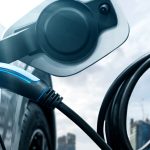Fleet Electrification: It’s on the Rise
Electric vehicles (EVs) have been on the rise for some time now. More and more people are switching over their personal vehicles to EVs. But what about the transition of fleet vehicles from internal combustion engines to zero-emission EVs? This effort is growing as well, but there’s a lot more to consider when deciding to electrify entire fleets.
The federal government is leading by example and directing the market to make this shift. President Biden’s Executive Order 14057 directs the federal government to acquire 100% zero-emission vehicles by 2035, including 100% zero-emission light-duty vehicle acquisitions by 2027 — among other commitments to achieve zero emissions by 2050. And more and more businesses are considering the significant benefits they can gain from electrifying their fleets. It’s estimated that EVs may comprise 10%-15% of commercial and passenger fleets by 2030.
The initial cost barrier. The initial purchase price of EVs is still typically higher today than a comparably-sized gasoline or diesel vehicle. However, electrification does save money in the long run. From a total cost of ownership perspective, electric fleet vehicles are seeing a decline in price due to decreasing battery costs, lower operating & maintenance costs over the life of the vehicle, and rebates & other incentives, which combine to make many EVs cheaper than internal combustion engines.
Which fleets and vehicles should go electric first? Greening heavy-duty fleets, such as garbage trucks, can be a big challenge because of the higher upfront costs involved. The upfront cost of an electric truck is 30-50% percent more expensive than a diesel truck. Electrifying light-duty vehicles, such as cars, and medium-duty vehicles, such as passenger and walk-in vans, is the place to start. Light-duty vehicles are often used for corporate fleets, municipal operations, taxis, ride shares, and police departments. Medium-duty fleets are most often used by schools, transit companies, hotels, and delivery services. Companies like UPS and Amazon are already transitioning thousands of their vehicles to electric.
How many on-site charging ports are necessary to support an electric fleet? Fueling EVs requires you to have specialty infrastructure in place: an initial challenge compared to internal combustion vehicles that you can just fuel at a gas station. But one charging station per EV may not be necessary. For a lot of fleets, many of their vehicles aren’t all driven on the same day and/or they don’t drive very far, so you don’t need to charge vehicles back to 100% all of the time.






